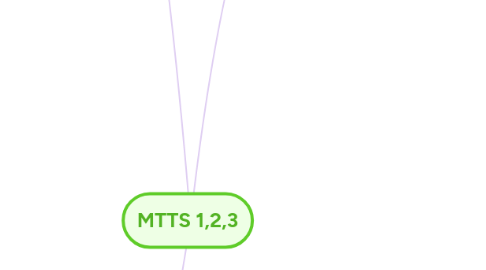
1. Ethical Issues
1.1. Digital divide
1.1.1. The digital divide is between race, gender, and economic class.
1.1.2. On an adult level, the rich and educated are more likely to have access to technology.
1.1.3. "62% of people in households making less than $30,000 a year used the internet, while in those making $50,000-74,999 that percentage jumped to 90%."
1.1.4. -Ask how many students have internet access at home. If they don't, ask them how that has been a challenge for them.
1.1.5. Give one group of students a dollar to get candy from the vending machine and another 5 dollars. Have the groups compare how many things they each could get.
1.1.6. Describe how with less resources you have less access to other resources.
1.2. Cyber bullying
1.2.1. Bullying that occurs through technology and not face to face interaction.
1.2.2. Can occur over social media platforms, texting, emails, or other communication apps.
1.2.3. "Approximately 35% of students aged 11-14 experience cyberbullying in their lifetimes"
1.2.4. -Cyber bullying is not only painful for the person being bullied, but the cyber bully them self could get in trouble with the law.
1.2.5. -Cyber bullying is preventable. If everyone keeps their unkind opinions and thoughts to themselves. Work on self-awareness and self-regulation skills.
1.2.6. If there is a sudden change in behavior, observe how much the student uses technology. Suggest a parent-teacher conference.
2. Social Issues
2.1. Acceptable Use Policy
2.1.1. Individual companies have their own AUP that states what is acceptable and unacceptable behavior on their website.
2.1.2. The National Education Association suggests that an effective AUP contain the following six key elements: -a preamble, -a definition section, -a policy statement, -an acceptable uses section, -an unacceptable uses section, and -a violations/sanctions section.
2.1.3. Amazon AUP
2.1.4. Discuss classroom rules and school rules
2.1.5. -Every company has different rules and regulations similar to the different rules at home and at school.
3. Legal issues
3.1. Fair Use
3.1.1. Part of Section 107 of the Copyright Act. Promotes freedom of expression by permitting the unlicensed use of copyright-protected works in certain circumstances.
3.1.2. The four factors are: -the purpose and character of your use -the nature of the copyrighted work -the amount and substantiality of the portion taken, and -the effect of the use upon the potential market
3.1.3. Some items can be used without problems of copyright if used in the right context. -music, internet, or parodies.
3.1.4. -Explain that everybody's ideas are unique and credit should always be given.
3.1.5. -No matter how much of the idea or work you use, it still needs to be credited. Even if you are just quoting a TV show.
3.1.6. -Read a book and then ask questions that require quotes. Teach them an elementary level to cite.
3.2. Creative Commons
3.2.1. A way to prevent your work and thoughts from being illegally copyrighted online. Allows information to be shared on the internet. People can share on the internet, without copyright laws being broken.
3.2.2. -Having a Creative Commons license allows others to view your work and use your work without copyright laws being broken.
3.2.3. 6 types of licences
3.2.3.1. Attribution CC BY
3.2.3.1.1. "This license lets others distribute, remix, tweak, and build upon your work, even commercially, as long as they credit you for the original creation."
3.2.3.2. Attribution-ShareAlike CC BY-SA
3.2.3.2.1. "This license lets others remix, tweak, and build upon your work even for commercial purposes, as long as they credit you and license their new creations under the identical terms."
3.2.3.3. Attribution-NoDerivs CC BY-ND
3.2.3.3.1. "This license allows for redistribution, commercial and non-commercial, as long as it is passed along unchanged and in whole, with credit to you."
3.2.3.4. Attribution-NonCommercial CC BY-NC
3.2.3.4.1. "This license lets others remix, tweak, and build upon your work non-commercially, and although their new works must also acknowledge you and be non-commercial, they don’t have to license their derivative works on the same terms."
3.2.3.5. Attribution-NonCommercial-ShareAlike CC BY-NC-SA
3.2.3.5.1. "This license lets others remix, tweak, and build upon your work non-commercially, as long as they credit you and license their new creations under the identical terms."
3.2.3.6. Attribution-NonCommercial-NoDerivs CC BY-NC-ND
3.2.3.6.1. "Only allows others to download your works and share them with others as long as they credit you, but they can’t change them in any way or use them commercially."
3.2.4. "Created in 2001 and had over 350 million licensed works by 2009."
3.2.5. -Watch a parody on Youtube and explain how it is ok that they did this because they gave the original source credit.
3.2.6. Find different technologies that show symbols for each licence
3.2.7. Play a remix of a song that contains the original lyrics, but another artist has contributed to.

